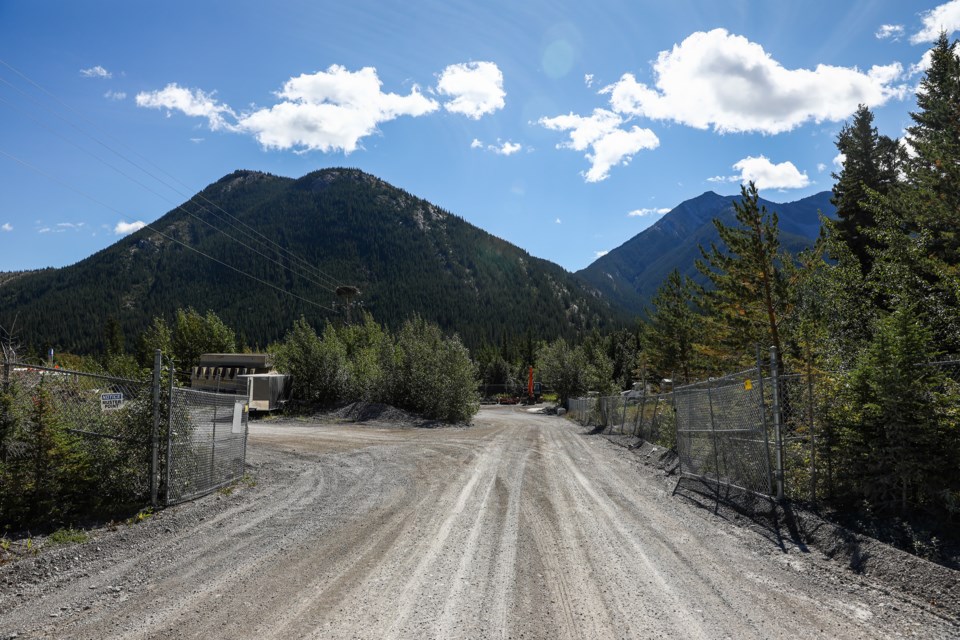MD OF BIGHORN – A net-zero feasibility study found that using natural gas would make the MD of Bighorn’s new operations and maintenance building more efficient than relying on Alberta’s current electricity grid, mostly powered by natural gas and coal.
The build would include solar panels to use less energy from the power grid and reduce pollution, a geothermal heat pump that doesn’t burn fuel and air leakage improvements to address thermal energy demand.
Using natural gas in the operations shop’s design would create around 0.2 kilograms of greenhouse gas (GHG) emissions for every million units of energy, while using Alberta’s electricity grid would produce about 0.59kg of GHG emissions for every unit of energy.
MD of Bighorn Reeve Lisa Rosvold said she had trouble reconciling the pursuit of a net-zero design for the much-needed new building knowing natural gas would be cleaner than using the province’s electricity grid.
“The report doesn’t necessarily make me feel like we’re making a better decision for the environment,” she said at the MD’s March 26 governance and priorities committee meeting.
“I don’t want a green-washed building just to say that we did a net-zero project, so that it can sound nice. I want it to actually be what is actually best in the face of adversity against climate change, not anything that’s green-washed.”
The report was prepared by Calgary-based Metafor with contributions from Harmony Engineering, Remedy Engineering, SMP Engineering and consultant firm Turner and Townsend. The study was funded by the Federation of Canadian Municipalities’ (FCM) Green Municipal Fund.
Based on analysis completed to date and guidelines for the capital project stream of the Green Municipal Fund, the project could secure up to $10 million in financing, with up to $1.5 million in financial support through a grant. The feasibility study is a prerequisite to applying for funding.
The study aimed to answer if the MD could achieve net-zero emissions with the new operations facility and if it can, how.
“If you read the executive summary – first three pages of the report – I think it’s pretty clear the conclusions they reached on that, that yes we can, and the path forward is explained pretty clearly,” said MD of Bighorn director of flood recovery Doug Fulford.
At the time of drafting the report, the total project cost was estimated to be around $13.44 million in capital costs, including design, engineering, construction, contingencies, internal staffing resources and the costs of achieving net-zero energy.
Fulford also noted, however, that the MD is unable to apply for the FCM funding unless it uses something other than carbon combustion as its primary resource for the maintenance facility.
“If we want that money and that low-interest loan, we have no choice,” he said.
“Even though it’s better for the environment in the short run, once Alberta gets off the coal, those numbers will look different.”
In 2015, under the NDP provincial government, it was announced Alberta would eliminate emissions from coal power generation by 2030. The Ministry of Environment and Protected Areas predicted the province would phase out all coal generation by early 2024, with plans to target a carbon-neutral grid by 2050.
According to data from the Alberta Electric System Operator (AESO), the province is ahead of schedule on its 2030 goal, and many coal plants have been replaced by natural gas or renewables.
Combined output from wind, solar and hydro outpaced coal for the first time in 2022, according to an annual AESO report. Renewables accounted for 12.6 per cent of total electricity generation in 2022.
Preliminary energy modelling to study a net-zero design for the MD’s yet-to-be-built operations facility was completed in October 2023.
“At this point in time, and I have no idea how long it’s going to be like that, it’s going to be better for the environment, according to this report, if we’re using combustibles versus electricity,” said Rosvold, who also asked if the feasibility study considered grid limitations if it were to run solely off the electrical grid.
Fulford said the idea would be the facility would generate enough of its own energy using only electricity to offset its energy used.
The report noted the facility, which is being built on MD land east of Exshaw by the Two Feathers site, between Bow Valley Trail and the CPKC railway tracks at 9,800-square feet in size, would require 148 MWh per year of power generation from on-site solar to achieve a net-zero annual energy target.
“What we’ll do is we’ll generate that energy and we’ll sell it back to the grid. But the energy we use from the grid, we’ll have to pay for. So, the actually use on the bill should, more or less, wash out,” said Fulford.
Coun. Steve Fitzmorris asked about the lifespan of the solar panels, which the report noted would be about 25 years.
Fulford pointed out the location of the facility will present a challenge in preventing the accumulation of dust layers on the panels from nearby industries, like the LaFarge plant.
“That’s one of our things operationally we would have to figure out as we go forward, is how would we keep those panels clean so that they actually do their job. To be determined,” he said.
The report was received as information and will return to the MD’s governance and priorities committee meeting for further discussion.
The Local Journalism Initiative is funded by the Government of Canada. The position covers Îyârhe (Stoney) Nakoda First Nation and Kananaskis Country.




